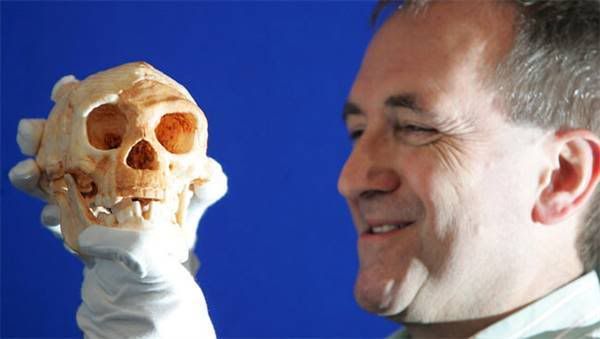"New computerized casts of abnormally small Homo sapiens brains are reigniting the debate over the skeletal remains nicknamed "The Hobbit."

Ever since the 18,000-year-old remains of the three-foot-tall adult female hominid were unearthed in 2003 on the remote Indonesian island of Flores, scientists have argued whether the specimen was a human with an abnormally small head or represents a new species in the human family tree. The diminutive creature had a brain approximately one-third the size of modern adult humans.
Some scientists named the specimen Homo floresiensis, a dwarfed offshoot of Homo erectus, a human ancestor that lived as far back as 1.8 million years ago.
Critics dismissed the remains as that of a human with a pathological condition called microcephalia, characterized by a small head, short stature and varying degrees of mental retardation.
In the latest study, the evidence supports the claim of a new species. A team of scientists led by Dean Falk, a paleoneurologist at Florida State University, compared computer-generated three-dimensional reconstructions, called "endocasts," of brains from nine microcephalic modern humans with those of 10 normal modern-human brains.
"We asked, ‘Is there anything other than size of the brain that separates these two groups?'" Falk said.
According to the researchers, the answer is "yes." They found that two ratios, created using different skull measurements, could be used to accurately distinguish the normal humans from the microcephalics nearly 100 percent of the time.
For example, dividing the distance from the front of the frontal lobe to the back of the occipital lobe of the brain by the front of the frontal lobe to the back of the cerebellum gives a ratio that reveals how much the cerebellum protrudes from the back of the brain.
"In microcephalics, the cerebellum tends to stick out farther back than in normal people," Falk told LiveScience. "We were able to quantify this with a ratio."
The other ratio quantified how wide the frontal lobes were for each skull and, according to the researchers, also could be used to distinguish normal humans from microcephalics.
Falk's team then applied this classification system to a virtual endocast of the skull of LB1. According to the researchers, LB1's features are closer to a normal human skull than to a microcephalic.
"We have answered the people who contend that the Hobbit is a microcephalic," Falk said.
As a control, the researchers also analyzed the skull of a human dwarf that, like LB1, also stood at about 3 feet tall. The technique correctly placed the dwarf skull in the same category as normal humans.
The team's findings are detailed in the Jan. 30 issue of the journal for the Proceedings of the National Academy of Sciences.
Questions remain
While the new technique suggests LB1 was not a microcephalic, it does not rule out that it was not a Homo sapiens. As evidence of that, Falk points to what she says are several advanced features of LB1's brain that are unlike those of modern humans or any other known hominid species.
"What we have is a little tiny brain that has four features that you can see with your eyes that are advanced and distributed from front to middle to back," Falk said. "In other words, this thing appears to be globally rewired. Those are really advanced features. They're not like humans, they're not like anything."
Robert Martin, curator of Biological Anthropology at the Field Museum in Chicago, is not convinced by the new evidence.
One of his major criticisms has to do with the sample of microcephalic skulls the team used.
"They're being a bit naughty about this," Martin said in a telephone interview. "Four of the nine microcephalics were not adults."
Falk's team maintains their inclusion of young skulls is justified because microcephalics are generally believed to achieve maximum cranial capacity by around four years of age.
Martin, who criticized a similar comparison done by Falk's team in 2005 as flawed, again disagrees.
"What we're saying is LB1 was definitely an adult. If LB1 was a microcephalic, he was one with a mild condition who managed to survive into adulthood," he said. "So the proper comparison is with microcephalics with a mild condition who were adults."
"I don't have any problems with having new hominid species," Martin added. "I just don't think this is one of them."
Another expert in the field, Bernard Wood of George Washington University, spoke in favor of Falk's research.
"Dean Falk and her colleagues have injected some much needed scientific rigor into the debate about the brain of Homo floresiensis," Wood said. "They show that the microencephaly 'explanation' for its size and morphology is untenable. I hope we can now get down to the important task of trying to understand the biology of H. floresiensis without the distraction of non-existent pathology.""




No comments:
Post a Comment